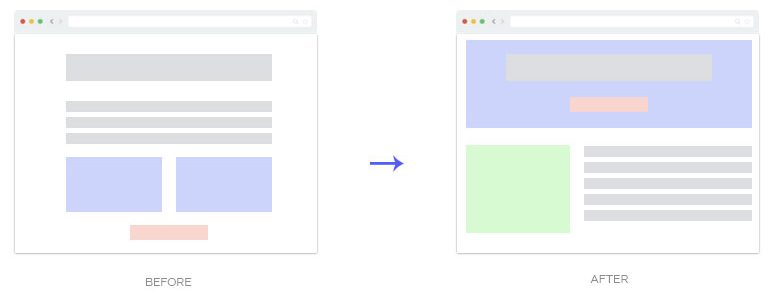Everyone agrees that optimization testing is the key to success in the digital world. But it comes with a catch 22 situation! Testing is a double-edged sword! If done right, testing can shower in unlimited benefits; but if gone wrong, it can literally drive you into the ground.
The following testing and optimization missteps are 3 serious yet common testing pitfalls we have experienced ourselves. The good news is that, once identified (as we have), they can easily be avoided to help you pursue optimization that gets your business on the path of success.
Problem #1. The random act of testing
If you’re sitting in your office asking yourself “What should I test next?”, you’re already doomed to fail.
Your “Let’s test whatever” approach will leave a big sinkhole between your website and conversions. And that’s why every testing should have a data backed approach.

The quick fix: Give your testing a structure
While you may catch lightning in a bottle through sheer serendipity, you will still be prone to inconclusive data collection which leads to little learning and NO optimization.
To keep from ending up on fruitless chases without any actionable results:
- Identify confusion points from the user’s POV in the whole testing.
- User testing and surveys can help you determine where to focus your optimizing efforts first.
- Once you have user feedback, create a testing plan about what changes will move the needle to improve your business.
In an effort to increase their signups, DHL ran a A/B test on their landing page and created a new one by highlighting the sign-up form, increasing its size and changing its position. They also traded their cityscape banner image with a friendly courier. These changes resulted in over a 129% increase in their conversion rate.
Problem #2. Your testing tool is making you fool
The widespread popularity of A/B testing has led to a wide range of awesome, pocket-friendly softwares to choose from. As differing tools offer differing functionality, being unaware to them can lead your A/B tests in trouble before you even get started.
For example, did you know that your testing software can significantly slow down your site? This decreased speed can adversely impact your site’s SEO and overall conversion rates. In fact, a one second delay in load time will result in 7% decline in conversions, creating a nightmare scenario for your website.
Digital influencer, Neil Patel, found that the A/B software he was using was showing significant differences, but when he implemented the new page he failed to see conversions change. His problem turned out to be a faulty testing tool.
So how can you ensure your A/B testing software is working fine?
The quick fix: Run an A/A test
Prior to running any A/B test with your tool, try and run as much A/A tests to identify any distortionary effects caused by your testing software. In the A/A test, you take the original variation of your landing page and test it against itself. If you see conversion rates drop as soon as you start testing, then your tool is likely faulty.
Problem #3: Sticking to incremental tests decrease conversions
The button color test has ruined A/B testing. Its popularity has made it the frame of reference for A/B testing but there’s more to the practice than that. While a small adjustment like button color might make all the difference for a big website, for the majority of us, these micro changes are not going to bring meaningful results.

A/B testing can force us to aim for minuscule improvements, but by focusing only on the incremental, we may be missing a much larger opportunity.
The quick fix: Periodic radical testing
Since testing is like a poker game, a good rule of thumb to win the jackpot is radical testing. If you are seeing a huge drop in your conversion rate, a huge change is required. And the philosophy behind large-scale changes to a website is direct: implement a major change and receive major positive effects in return.

Summing it up
Though there are many, many more mistakes but the above are the most common A/B testing mistakes faced by our Q/A analysts. Testing is crucial to the success of your business, but it is equally important to ensure that your testing methodologies will move your business towards success.
If you are still concerned about your conversion rates, discuss it here with 42Works. Else if you have an optimization that really worked, show it off in the comments!


